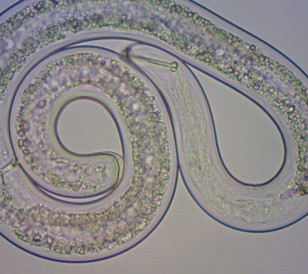
Nematodes

Plant Parasitic Nematodes are known globally for their adverse effects on crop yields and quality
Small, mobile and with an underground habit that makes their identification and prediction difficult, the many species of nematodes found to date have one thing in common – the potential to cause economic losses.
In recent years, concerns about the toxicity and environmental impact of older fumigant and other products for nematode control have seen many of them being either withdrawn or banned from sale, making the situation increasingly challenging for growers.
At the same time, food production standards have risen, in response to consumer demand.
Fortunately, a new development from Adama is starting to change the way that nematode populations can be managed, reducing crop damage by the pest.
After over 20 years without any major innovation, the arrival of a more effective non-fumigant nematicide, Nimitz, with its better safety and environmental profile, has had an immediate impact.
Offering application and operator safety benefits, it had obvious appeal to busy farmers. And when its use in the field showed effective nematode control, with no adverse effects on beneficials, they were quick to respond.
Used as part of an integrated approach, Nimitz is helping to reduce nematode populations. To learn plenty of valuable information about nematodes, this ground-breaking product and its potential role in your production system, read and download our three guides on nematodes and their control.
Guide 1
Guide 2
Guide 3
Spiral Soybean Nematode (Helicotylenchus spp.) adult female
Galls caused by Root Knot Nematode (Meloidogyne incognita) in chard (Beta vulgaris). Farming Research Systems, Boynton Beach, FL USA
